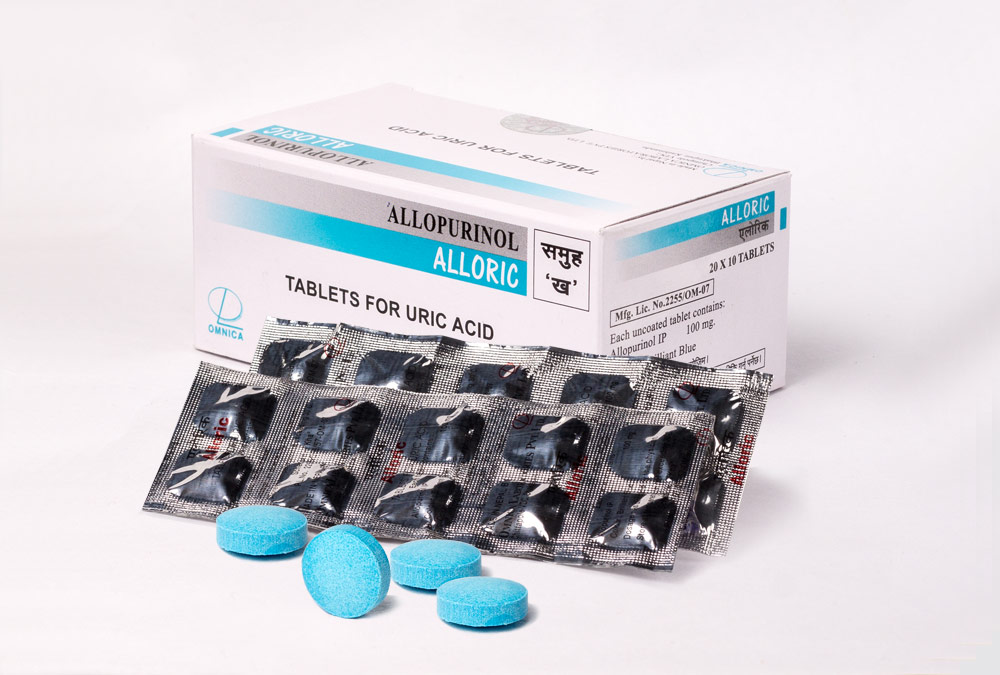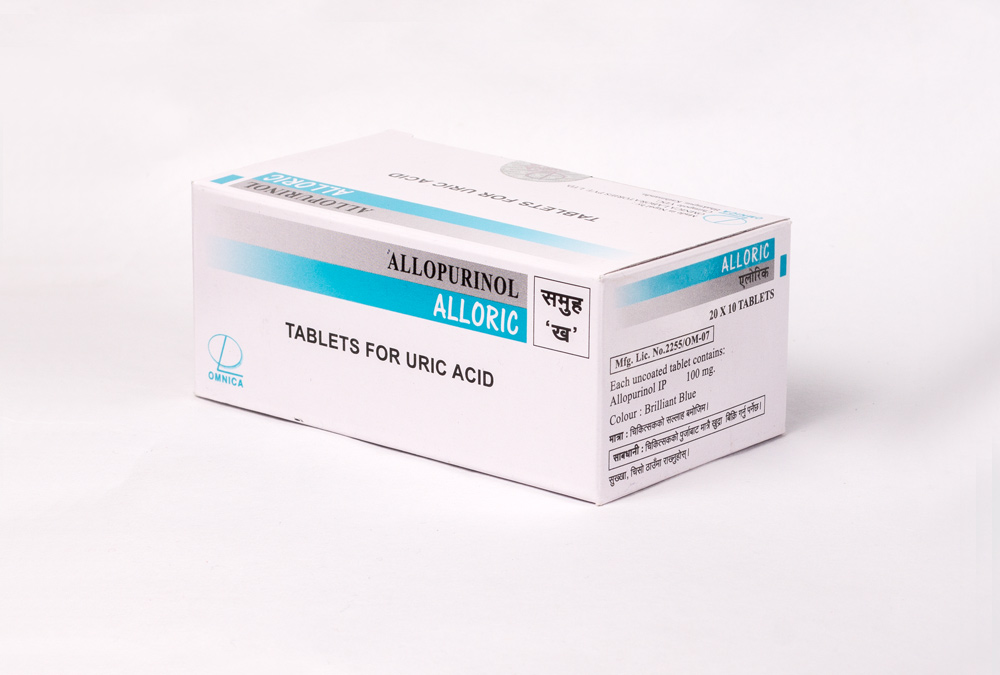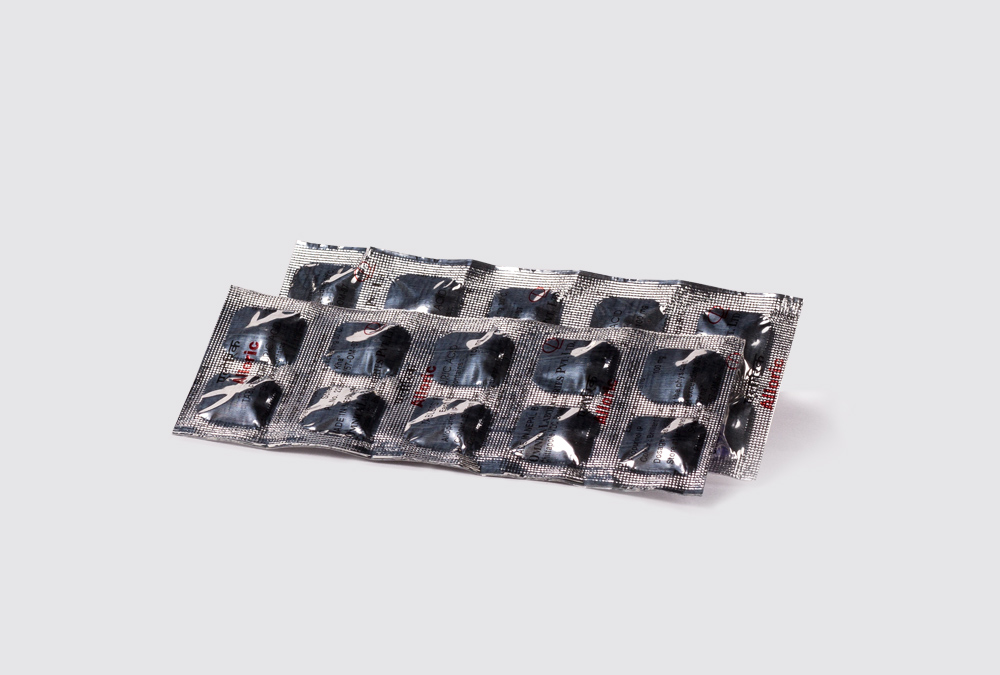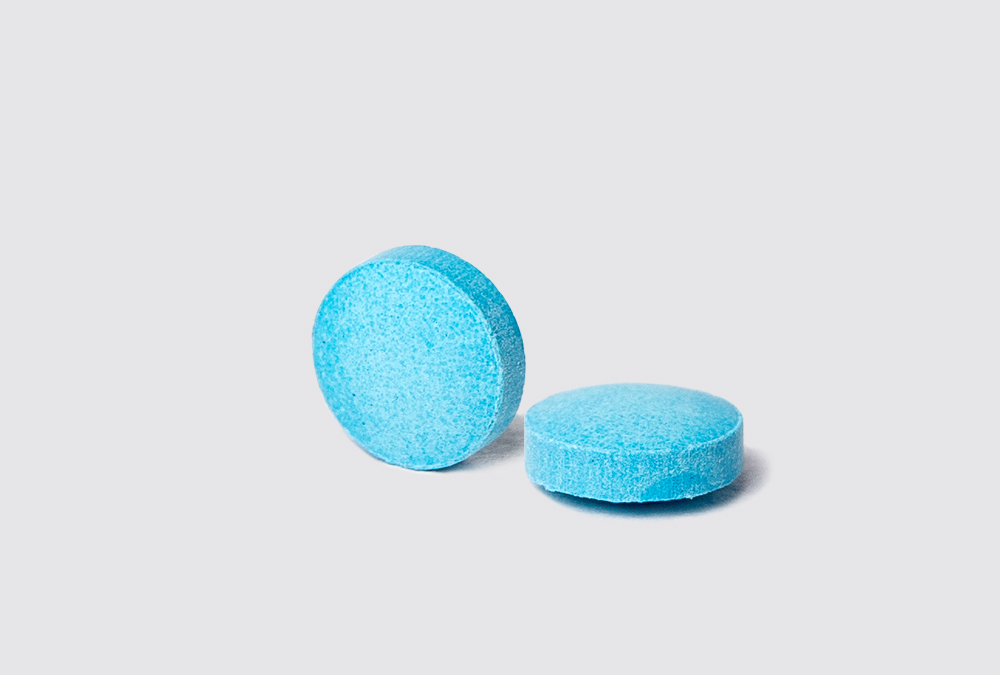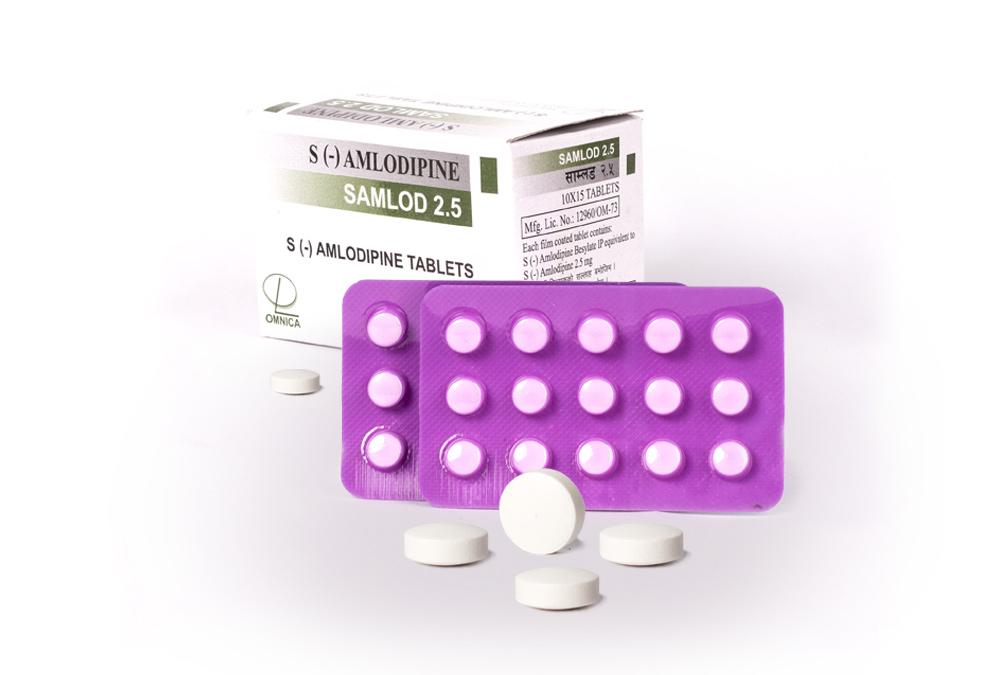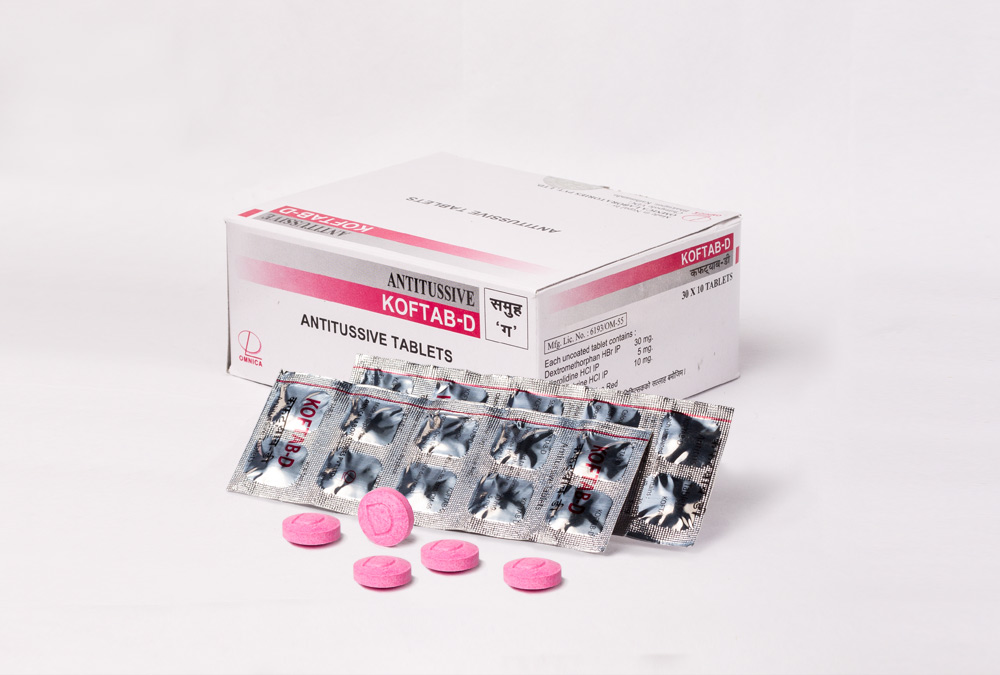Brand Name : ALLORIC
Generic Name : Allopurinol
Preparations : 100 mg / 300 mg Tablets
Pharmacological Category: Antigout (Xanthine Oxidase Inhibitor)
Mechanism of Action (MOA)
ALLORIC (Allopurinol) inhibits xanthine oxidase enzyme, which is responsible for the conversion of hypoxanthine to xanthine and xanthine to uric acid. Thus, the concentration of uric acid is reduced in extracellular fluid, thereby preventing precipitation of crystals in the joints or elsewhere.
Pharmacokinetics
- Absorption : Up to 90% is rapidly absorbed from the gastrointestional tract
- Onset of Action : 2 to 3 days
- Peak Plasma Time : 0.5 to 2 hours
- Time to Peak Effect : 7 to 14 days
- Bioavailability : 49 to 53%
- Protein Binding : Less than 1%
- Metabolism : Liver (oxypurinol – active metabolite)
- Elimination Half-life : Allopurinol: 1 to 3 hours; Oxypurinol: 15 to 20 hours
- Excretion : Urine (80%), faeces (10% to 20%)
Indications and Dosage
Gout :
- Mild Gout : ALLORIC 200 to 300 mg per day. Maximum: ALLORIC 900 mg per day
- Moderately Severe Tophaceous Gout : ALLORIC 400 to 600 mg per day. Maximum: ALLORIC 900 mg per day
- Reduction of Flare-up of Acute Gouty Attacks :
Initial : 1 tablet of ALLORIC 100 mg per day.
Titrate : Increase by 1 tablet of ALLORIC 100 mg per week until serum uric acid level is less than or equal to 6 mg per decilitre.
Maximum : 900 mg per day
Chronic gout :
- Uric Acid Nephropathy associated with Cancer Therapy : ALLORIC 600 to 900 mg per day for 2 to 3 days with high fluid intake.
Maximum : ALLORIC 900 mg per day. - Prevention of Uric Acid Nephropathy associated with Cancer Therapy : ALLORIC 600 to 900 mg daily for 2 or 3 days prior to cancer therapy.
Pediatric :
Secondary Hyperuricemia with Malignancies
- Less than 6 years old : ALLORIC 150 mg per day
- 6 to 10 years old : ALLORIC 300 mg per day
Evaluate response after 48 hours and adjust dose if necessary
Concomitant Medication :
Colchicine / Anti-inflammatory Agents : While adjusting dose of allopurinol, continue therapy until serum uric acid is normal and no acute gouty attacks occur for months
Renal Impairment :
Creatinine Clearance 10 to 20 ml per minute : 2 tablets of ALLORIC 100 mg per day
Creatinine Clearance less than 10 ml per minute : Maximum: 1 tablet of ALLORIC 100 mg per day
Creatinine Clearance less than 3 ml per minute : Dosing intervals are lengthened
Administration :Taken immediately after meal for better tolerance. Sufficient fluid should be taken so that daily urinary output is at least 2 litres; also maintain neutral or slightly alkaline urine.
Side Effects
MOST COMMON : Skin rash (maculopapular or pruritic, sometimes purpuric)
SEEN : Serious hypersensitivity: Exfoliative rashes, the Stevens-Johnson syndrome and toxic epidermal necrolysis
Further symptoms of hypersensitivity: fever and chills, lymphadenopathy, leucopenia or leukocytosis, eosinophilia, arthralgia, and vasculitis leading to renal and hepatic damage and very rarely, seizures.
Hepatotoxicity and signs of altered liver function may also be found in patients who are not hypersensitive. Haematological effects include thrombocytopenia, aplastic anaemia, agranulocytosis, and haemolytic anaemia.
RARE : Paraesthesia, peripheral neuropathy, alopecia, gynaecomastia, hypertension, taste disturbances, nausea, vomiting, abdominal pain, diarrhoea, headache, malaise, drowsiness, vertigo and visual disturbances
Note:
On the beginning of chronic gout treatment with allopurinol, increase in acute attacks may be experienced by the patient; however, the attacks usually subside after several months.
Therefore, doctors usually prescribe ALLORIC along with pain killer.
Contraindications
Hypersensitivity to allopurinol
Warnings / Precautions
- Should not be used in acute gout attack except when acute attacks occur in patients already taking the drug and the acute attack is treated separately.
- Treatment should be stopped immediately if any skin reactions or signs of hypersensitivity develop. Low dose of allopurinol can be reintroduced to a patient cautiously when mild skin reactions have cleared.
- Dosage should be reduced in renal or hepatic impairment.
- To reduce the risk of renal xanthine deposition an adequate fluid intake (2 to 3 liters daily) is required.
Drug Interactions
- When allopurinol is taken with amoxicillin or ampicillin, there may be increased risk of skin rash.
- Aspirin and the salicylates when taken concomitantly with allopurinol may decrease the efficacy of allopurinol.
- ACE inhibitors/ thiazide diuretics may increase the hypersensitivity reaction of allopurinol particularly in patients with renal impairment.
- Allopurinol inhibits oxidation of azathioprine and mercaptopurine, therefore, dose of azathioprine and mercaptopurine is reduced by 1/3rd or 1/4th of usual dose.
- Allopurinol enhances the activity of and possibly increasing the toxicity of a number of other drugs including some antibacterials, some anticoagulants, some other antineoplastics, ciclosporine, some sulfonylurea antidiabetics, theophylline and vidarabine.
Pregnancy Category : C
Presentations
ALLORIC 100 mg : A box of 20 strips, each strip of 10 tablets
ALLORIC 300 mg : A box of 10 blister, each blister of 10 tablets
